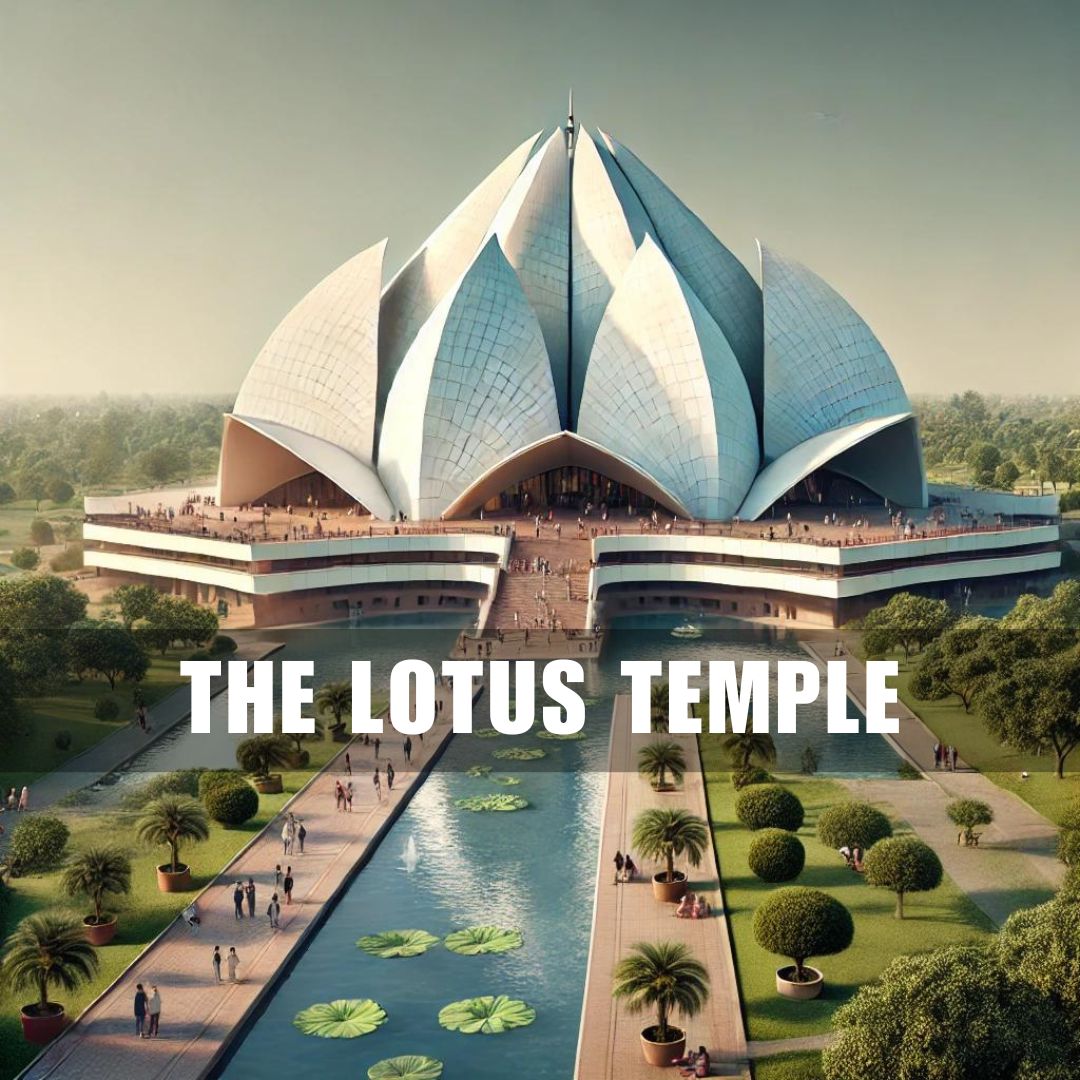The Lotus Temple: A Symbol of Serenity and Unity in Delhi
Nestled in the heart of Delhi, the Lotus Temple stands as an epitome of tranquility and architectural brilliance. Officially known as the Bahá’í House of Worship, this magnificent structure attracts visitors from all walks of life, drawn by its serene atmosphere and unique design.
A Glimpse into History
The Lotus Temple was completed in 1986 and serves as a place of worship for the Bahá’í faith. The Bahá’í faith, which emphasizes the unity of all religions and humanity, is beautifully reflected in the temple’s open-door policy, welcoming people of all religions, backgrounds, and beliefs. The temple was designed by Iranian architect Fariborz Sahba, who was inspired by the lotus flower, a symbol of purity and peace in various cultures.
Architectural Marvel
The architecture of the Lotus Temple is a testament to modern design harmoniously blending with traditional symbolism. The structure comprises 27 free-standing marble-clad “petals” arranged in clusters of three to form nine sides. The temple’s surface is made of white marble from the Penteli mountain in Greece, the same marble used in many ancient monuments.
The temple’s design not only symbolizes the lotus flower but also incorporates elements of light and water, adding to its aesthetic appeal. The central hall, with its soaring height of over 40 meters, can accommodate around 2,500 people, making it a serene space for prayer and meditation. The temple is surrounded by nine reflecting pools and lush gardens, enhancing its beauty and providing a peaceful retreat from the bustling city life.
Location and Accessibility
The Lotus Temple is situated in the southern part of Delhi, near Nehru Place. Its exact address is Lotus Temple Road, Bahapur, Shambhu Dayal Bagh, Kalkaji, New Delhi. The temple is easily accessible by public transport, with the Kalkaji Mandir metro station being the closest.
Best Time to Visit
The Lotus Temple attracts visitors throughout the year, but it experiences a significant increase in footfall during the cooler months from October to March. During these months, the pleasant weather allows visitors to comfortably explore the temple and its surrounding gardens. The temple is open from 9:00 AM to 5:00 PM in the winter and from 9:00 AM to 7:00 PM in the summer. The best time to visit is in the morning or late afternoon to avoid the midday heat and crowds.
Visitor Experience
Upon entering the temple, visitors are required to maintain silence to preserve the sanctity of the space. The temple’s serene environment offers a perfect setting for introspection, prayer, or simply enjoying a moment of peace. The temple also hosts various cultural and spiritual events, including prayer sessions and lectures on the Bahá’í faith, fostering a sense of community and learning.
In addition to its spiritual and architectural significance, the Lotus Temple is a photographer’s delight. The play of light and shadow on the marble petals, especially during sunrise and sunset, offers breathtaking views and stunning photo opportunities.
The Lotus Temple is more than just a place of worship; it is a symbol of unity, peace, and architectural splendor. Its welcoming atmosphere and serene environment make it a must-visit destination for anyone exploring Delhi. Whether you’re seeking spiritual solace, architectural inspiration, or a peaceful escape, the Lotus Temple offers a unique and enriching experience that leaves a lasting impression on all who visit.




